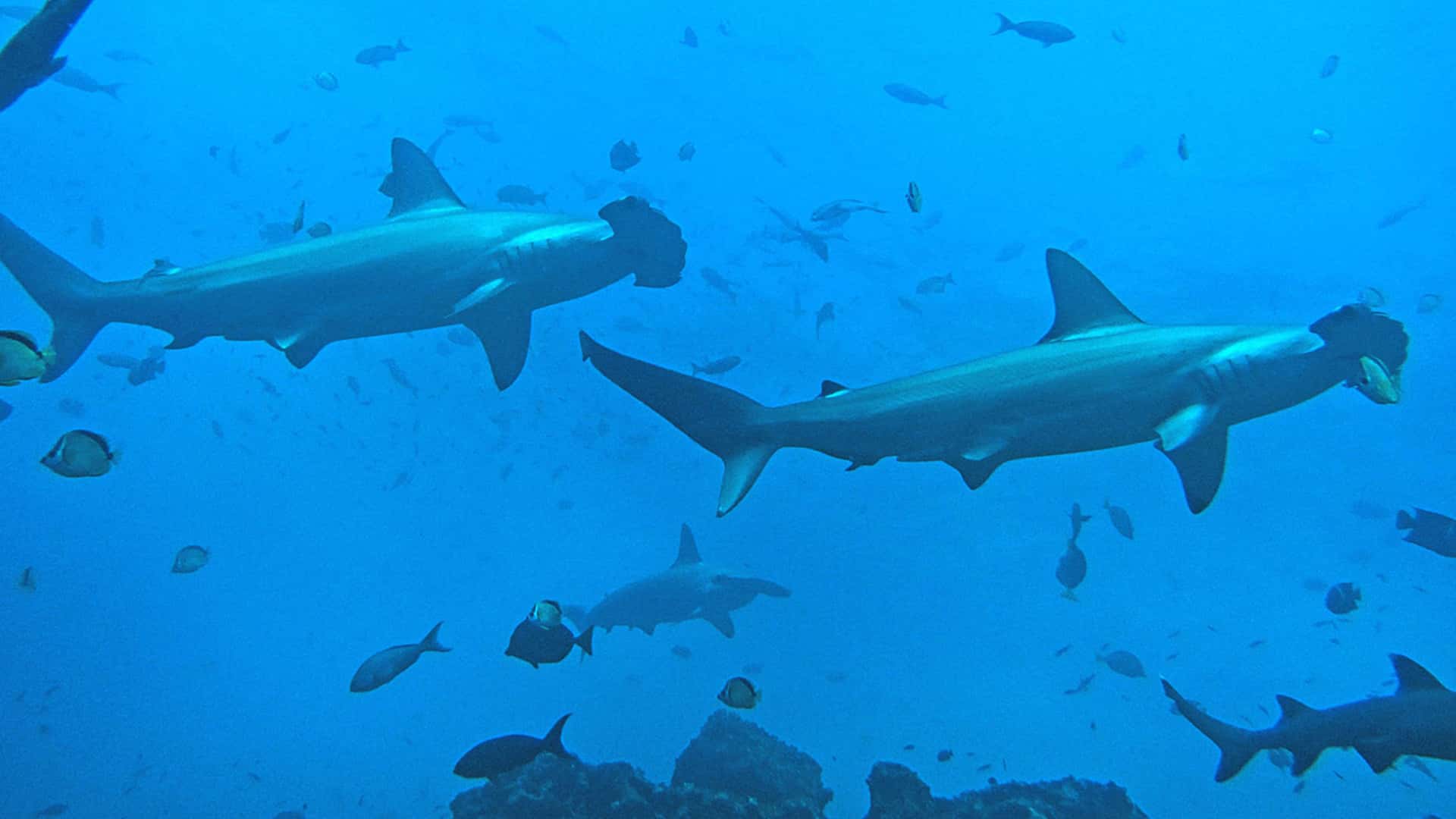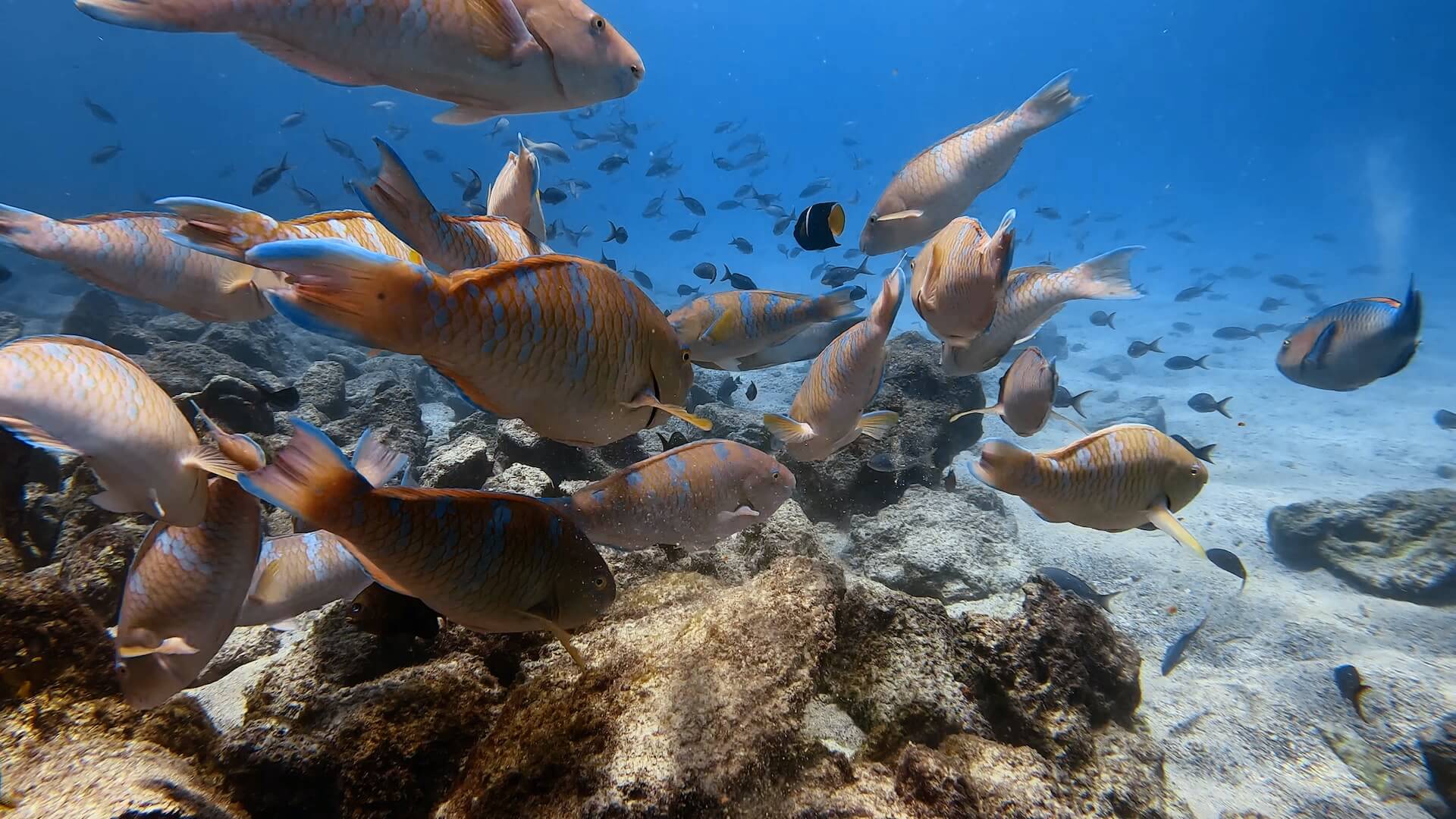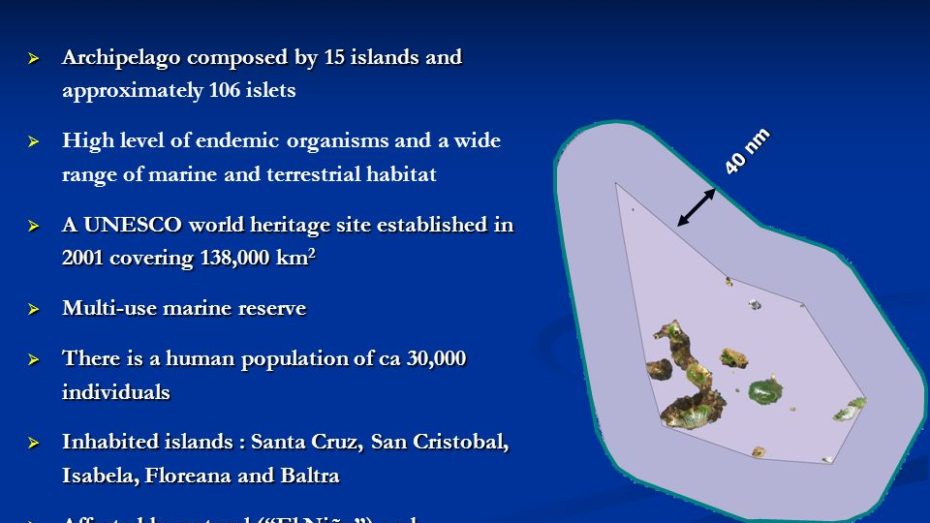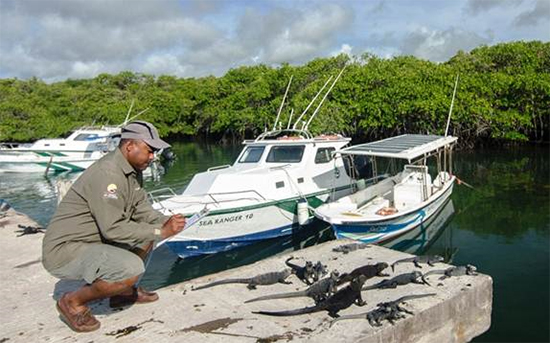As a leading provider of Galapagos diving trips and courses, the team at Academy Bay Diving have spent countless hours exploring the beauty and wonders of the Galapagos Marine Reserve. We love sharing our passion for this unique place, so we have used this blog to provide a brief introduction to it, from its staggering biodiversity to its fascinating history.
If you have any questions about our dive trips, please don’t hesitate to get in touch. For now, though, let us introduce the Galapagos Marine Reserve.

What is the Galapagos Marine Reserve?
The Galapagos Marine Reserve is one of the largest and most biologically diverse marine protected areas (MPAs) in the world. The MPA covers 133,000 square kilometers (51,352 square miles), surrounding the Galapagos Islands in the eastern Pacific Ocean, about 1,000 kilometers (600 miles) off Ecuador’s coast.
According to the Galapagos National Park Administration, more than 2,900 marine species have been recorded in this remarkable environment, including:
- Whales
- Dolphins
- Albatrosses
- Sharks
- Sea Lions
- Penguins
- Fur Seals
- Rays
- Cormorants
- Marine Iguanas
- Sea Turtles
- Tropical Fish
Check out our blog about the incredible marine life of the Galapagos to find out more about the species that call the reserve home.
Numerous habitats exist in the reserve. Seamounts (or underwater volcanoes and mountains) rise to near the ocean’s surface, providing feeding grounds for an array of fish species, such as sharks and tuna, turtles, sea lions, and birds. Further habitats include reefs, underwater cliffs, lagoons, and wetlands.
The rich biodiversity found in the reserve is the result of the islands’ location along the Equator. Cold and warm ocean currents combine with nutrient-rich cold water rising from the ocean floor. Those nutrients sustain the food chain and the marine life within it, from tiny animals like sea urchins to giants like whale sharks.

The Creation of the Galapagos Marine Reserve
Ever since Charles Darwin wrote about the Galapagos Islands in The Voyage of the Beagle and On the Origin of Species, they have been recognized as a unique ecosystem. Darwin, a biologist studying animal species and fossils in South America during the mid-1800s, used the finches of the Galapagos to illustrate his theory of natural selection. He also wrote about the islands’ fish, tortoises, and marine mammals. If you’re interested in this chapter of history, we think you’ll love our blog Why Did Darwin Go to the Galapagos?
Many scientists have also carried out extensive surveys of the archipelago for more than a century. In 1904, for example, American scientists stayed in the Galapagos for a whole year, cataloging species, their habitat, and their behavior.
In 1959, the government of Ecuador created Galapagos National Park. By the 1970s, there was notably increased human activity, such as development and agriculture, on the islands. As a result, the surrounding waters started to suffer from pollution linked to urban waste and agricultural runoff. The Terrestrial Management Plan of the National Park, written in 1974, recommended protecting two nautical miles of sea around each of the 19 main islands in the archipelago.
Ecuador created the Marine Protected Area (MPA) in 1998. The reserve’s outer boundary is 40 nautical miles off the islands’ coasts, and it includes the islands’ inland waters, such as streams and lagoons.
The process of creating a marine protected area is long, but this is typical. “Many take at least 10 years to get to designation status. At least 10 years,” says Caitlyn Toropova, the Marine Protected Areas coordination officer for the World Conservation Union.
The reserve is a UNESCO Biosphere Reserve and World Heritage Site, recognized for its value in conserving and maintaining unique species. It is managed by the Directorate of the Galapagos National Park.

That’s all we have time for now, but if you want more travel inspiration, head over to our blog How to Spend a Week in the Galapagos Islands. Remember, if you have any queries about our Galapagos diving trips and courses, simply get in touch for all the information you need.
Information from National Geographic.










